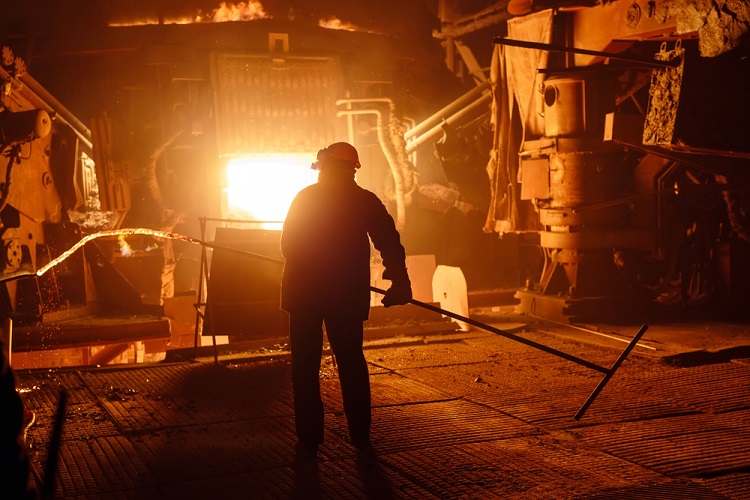Titanium slag is an indispensable material in modern manufacturing processes and occupies a critical position across several industries due to its unique properties. This article peels back the layers of the titanium slag production process and discusses the intricate processes, economic ramifications, and factors influencing titanium slag production costs. Keep reading to discover everything you need to know about the titanium slag smelting process.
Table of Contents
What You Need to Know About Titanium Slag
Perhaps you ask: what is titanium slag used for? Titanium slag is derived as a byproduct from the intricate processing of titanium ore, and it possesses remarkable properties, rendering it invaluable in various industrial applications. Its aerospace, defence, and medical field applications make it a linchpin in the global market. The burgeoning demand for titanium-based products necessitates a comprehensive understanding of the titanium slag production process to ensure sustainability and cost-effectiveness in its production.
Titanium Slag Production Process
The production of titanium slag involves a meticulously designed, multi-stage process comprising metallurgical and chemical techniques. This process transforms raw titanium feedstock through a series of high-temperature reactions. Understanding the intricacies of these stages is essential for unraveling the factors contributing to the total production cost. In addition, an in-depth examination of environmental and technological considerations reveals the balance between efficiency and ecological responsibility that characterizes modern titanium slag production.
Key Factors Influencing Production Costs
Raw Materials
The primary raw material in titanium slag production is titanium feedstock, and its cost can significantly influence production expenses. Beyond titanium feedstock, the selection and fluxing agent costs are important. These agents facilitate the separation of impurities during the production process, affecting the efficiency and cost of titanium slag production.
Energy Consumption
Titanium slag production is energy-intensive, relying on electricity to sustain high-temperature reactions. The cost of power, influenced by global energy markets and regional dynamics, directly impacts the cost structure of titanium slag production.
In addition, the choice of heat sources, whether traditional or innovative, can influence the energy efficiency of the titanium slag smelting process. Optimal heat sources, aligned with cost-effectiveness and environmental considerations, are crucial in shaping the economic viability of titanium slag production.
Labour Costs
The expertise required in the production of titanium slag demands skilled labour. The cost of skilled personnel, including metallurgists and technicians, contributes significantly to production expenses. Balancing quality and cost-effectiveness in skilled labour is a delicate consideration.
Further, integrating automation and cutting-edge technology introduces a transformative element. While automation may reduce labour costs, the initial investment in technology and ongoing maintenance affect the cost-effectiveness of titanium slag production.
Regulatory and Environmental Compliance
Compliance with environmental standards is non-negotiable in modern industrial processes. The cost of implementing eco-friendly practices, waste treatment, and adherence to emissions standards adds a layer of complexity and cost to titanium slag production.
Efficient waste management practices are also a regulatory requirement and an ethical imperative. The cost of treating and disposing of byproducts generated during titanium slag production contributes to the overall financial considerations.
Technological Innovations
Ongoing research and development in metallurgical and chemical engineering advances processing technologies. Implementing more efficient and cost-effective processes can revolutionize the economics of titanium slag production.
Continuous improvement in efficiency, whether through heat recovery systems, recycling processes, or optimization of reaction kinetics, directly influences production costs. Adopting innovative approaches that streamline the production chain contributes to cost reduction.
Technological Innovations in the Titanium Slag Production Process
In the quest for cost efficiency, technological innovations are powerful catalysts for transformative change in titanium slag production. Advances in processing technologies, efficiency improvements, and cost-reduction strategies can change the industry positively. Hence, examining case studies of successful implementations showcases the tangible benefits of adopting cutting-edge technologies and underscores the transformative power of innovation in reshaping the future of titanium slag production.
The future outlook of titanium slag production demands a good understanding of new trends, potential disruptions, and untapped opportunities for optimization. Moreover, the titanium slag smelting process will improve as technology continues its inexorable march forward. Thus, anticipating future challenges and opportunities ensures industries remain agile, adaptable, competitive, and ready to sail the dynamic titanium market terrain with foresight and resilience.
Conclusion
The cost of the titanium slag production process is a multifaceted aspect of the titanium industry that demands a comprehensive examination. Industries can make informed decisions, optimize processes, and contribute to the sustainability of the titanium supply chain by knowing the factors influencing the titanium slag smelting process. Therefore, a comprehensive understanding of titanium slag production will be beneficial and essential for the continued success of industries reliant on this remarkable material.

